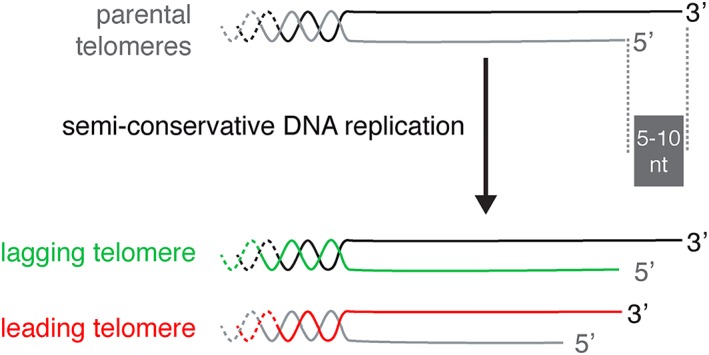Figure 3.

The DNA end replication problem and progressive telomere shortening contain an intrinsic mechanism that generates length asymmetry (modified from Soudet, Jolivet, & Teixeira, 2014). Telomeres end with a 3′‐overhang of 5–10 nucleotides in Saccharomyces cerevisiae. Passage of the replication fork leads to two newly replicated telomeres of different lengths. The telomere replicated by the lagging strand machinery naturally bears a 3′‐overhang by the removal of the last RNA primer of the Okazaki fragment, whereas the telomere replicated by the leading strand machinery requires additional resection and fill‐in steps to regenerate a 3′‐overhang
